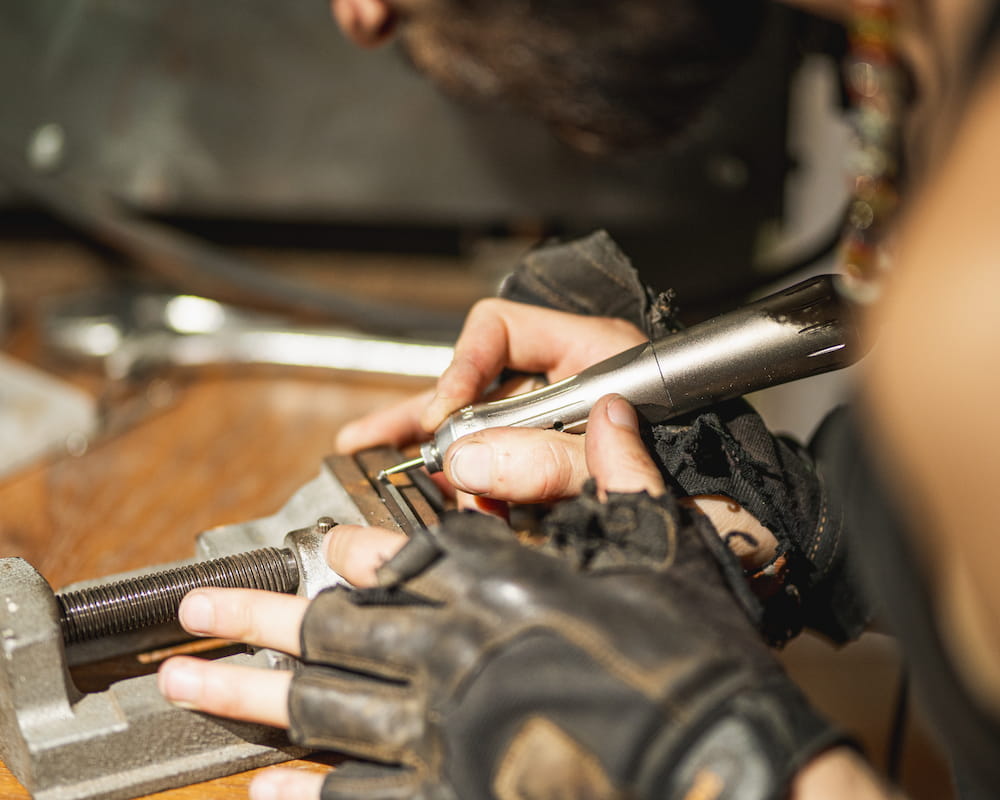Your cart
It seems that your cart is empty.
Headlines
Your cart
It seems that your cart is empty.
Headlines


An artisanal knife begins with a selection of carefully chosen materials. For the blades, high-quality steels are used, whether carbon, stainless, or damascus. Some of these steels, such as hand-forged varieties, require specific treatment that affects the final cost.
For the handle, rare wood species or innovative materials like high-end composites are often found. These choices provide durability, a unique aesthetic, and an unmatched feel, but they also come at a higher cost compared to standard plastic handles.

It's in the workshop where it all happens! Unlike industrial production where blades are cut in series by machines, an artisanal knife can be forged piece by piece, requiring hours of work.
Take a forged blade: the cutler starts with a steel bar that he heats, shapes, hammers, and then refines with a file. This process can take 10 to 20 hours, depending on the details and finishes.
In comparison, a blade cut by material removal, although still artisanal, will take less time to create, which is reflected in the final price. But, in both cases, each piece is shaped by expert hands and goes through rigorous quality control steps.

Craftsmanship is above all the creation of unique pieces. A simple knife, without engraving or openwork, will naturally cost less than an exceptional piece with complex details, such as a damask blade or an inlaid handle. Each knife tells a story: that of the craftsman, the material, and the creative process.
An artisanal knife is not just a tool, it is a functional work of art. You are not just buying a blade, but a piece that carries with it the investment of time, passion, and skill of a craftsman.

Let's compare a handcrafted knife to an industrial piece. The latter, mass-produced, benefits from economies of scale: materials and processes are standardized, and hundreds of pieces are manufactured on the assembly line each day.
On the other hand, a handcrafted knife, made by hand, involves individual work at each stage. This is what justifies the price difference: an artisan does not produce a piece in haste, but pays attention to every detail to ensure a product that exceeds typical quality standards.

Finally, there is the aesthetic aspect. Each artisanal knife is designed to be as beautiful as it is effective. Whether it's a damask blade with hypnotic patterns or a handle made of precious wood with unique textures, these visual details add extra value. An artisanal knife is an object that you love to show off, give as a gift, or pass down, becoming much more than just a tool.

An artisanal knife is much more than a price. It is an object that combines know-how, uniqueness, and functionality. By investing in a blade crafted by an artisan, you are also supporting a passion, a trade, and an art. So, ready to take the plunge and discover a knife that will accompany you for years?